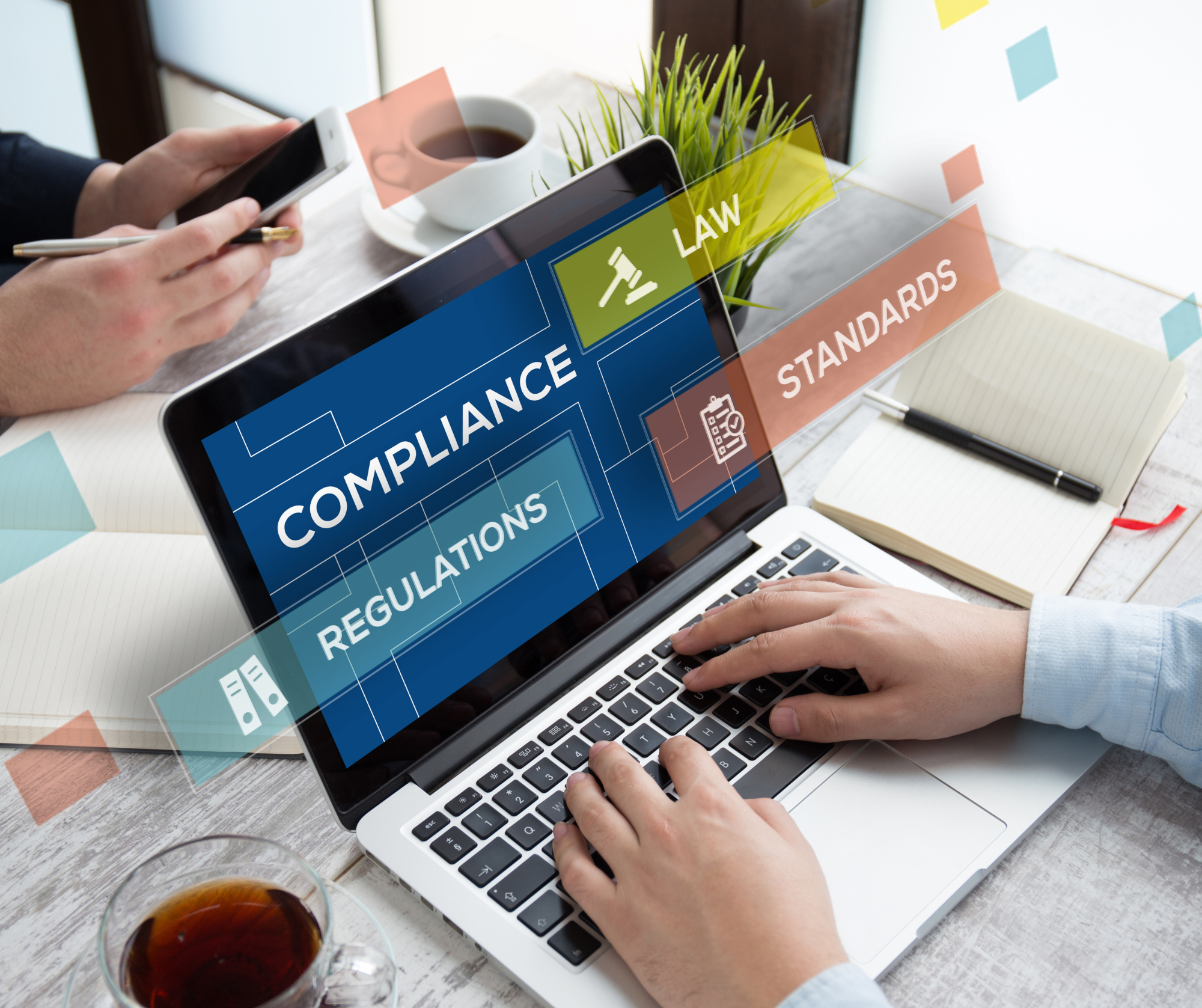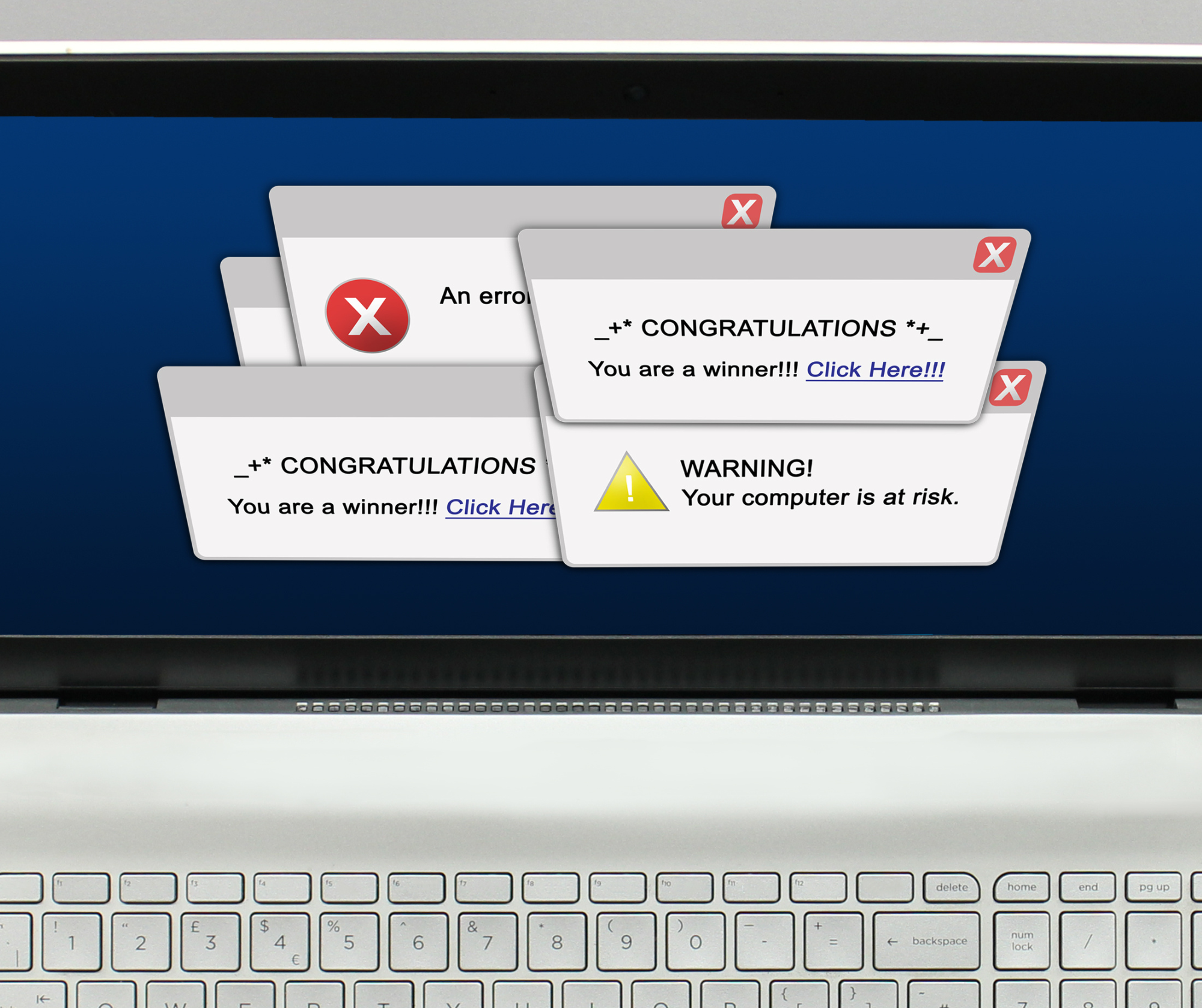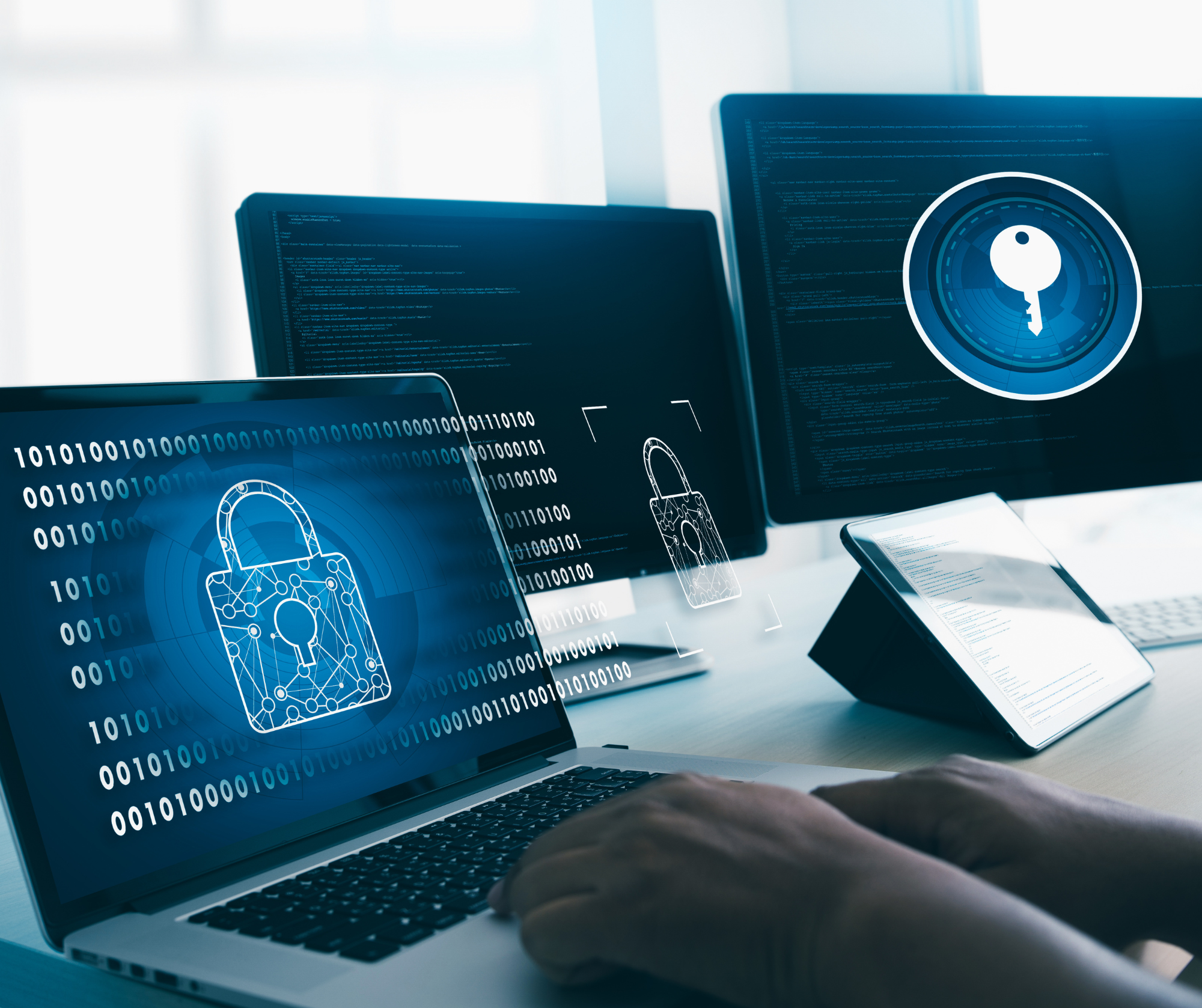In today’s digital age, our personal data is more vulnerable than ever before. From financial information to health records, our sensitive data is constantly at risk of falling into the wrong hands. That’s why recent actions by the Biden administration to safeguard Americans’ personal data from “countries of concern” are so significant. President Biden’s executive order, issued last February 28, 2024, highlights the importance of protecting our most personal and sensitive information. This includes genomic data, biometric data, personal health data, geolocation data, financial data, and certain kinds of personally identifiable information. So, what exactly does this mean for you and your data security? Firstly, it’s crucial to understand which countries have been identified as “countries of concern.” These include China, Russia, Iran, North Korea, Cuba, and Venezuela. These nations pose potential threats to our data security, whether through state-sponsored cyberattacks or other means. The executive order tasks the Department of Justice with implementing measures to prevent Americans’ personal data from being transferred to these countries. This includes working with other government agencies such as the Department of Homeland Security, the Departments of Health and Human Services, Defense, and Veterans Affairs, to ensure that federal contracts do not inadvertently aid in the transfer of sensitive health data. Additionally, the Committee for the Assessment of Foreign Participation in the United States Telecommunications Services Sector will review submarine cable licenses with a focus on potential threats to sensitive personal data. But what does this mean for businesses and individuals? For businesses, it’s a reminder of the importance of robust data protection measures. Companies must ensure that they are compliant with regulations and take proactive steps to secure sensitive information. This may involve implementing encryption methods, secure storage solutions, and continuous monitoring for potential threats. For individuals, it highlights the need to be vigilant about who has access to our personal data. We should be mindful of the privacy policies of the services we use and take steps to minimize the collection and sharing of our sensitive information whenever possible. Ultimately, President Biden’s executive order serves as a wake-up call to the importance of data security in an increasingly interconnected world. By taking proactive steps to protect our personal data, we can help safeguard our privacy and prevent it from falling into the wrong hands. Remember, your data is valuable – so let’s work together to keep it safe. Stay informed, stay vigilant, and stay secure. Explore a wealth of information on our website https://www.hammett-tech.com/our-blog/ Visit our Socials! https://www.facebook.com/HammettTech http://www.linkedin.com/companies/hammett-technologies Hammett Technologies (@HammettTech) / Twitter
Audits. The mere mention of the word can send shivers down the spine of even the most seasoned business owner. The anticipation of being scrutinized and potentially penalized is enough to make anyone uneasy. But what if I told you that with a little preparation, you could turn that anxiety into confidence? If your business accepts credit cards, then you’re already familiar with the Payment Card Industry (PCI) data security standard. Compliance with PCI isn’t just a suggestion—it’s a necessity. Not only for you and your employees but for anyone who has access to your IT systems. After all, if someone can access your data, they’re obligated to meet PCI compliance too. So, the question remains: Is your business prepared for a PCI compliance audit? Before we delve into the nitty-gritty details, let’s establish your PCI level. Depending on the volume of transactions your business handles annually, you fall into one of four levels: Level 4 for fewer than 20,000 transactions, Level 3 for 20,000 to 1 million transactions, Level 2 for 1 to 6 million transactions, and Level 1 for over 6 million transactions. Knowing your level sets the stage for understanding your compliance requirements. One crucial aspect of PCI compliance is maintaining an audit-trail history for a specified period. This period varies depending on your business’s needs and legal regulations. It’s imperative to determine the appropriate duration for retaining your records to ensure compliance. Now, let’s talk security. Are your IT systems fortified with the necessary safeguards to maintain confidentiality and security for all transactions? From robust firewalls to encrypted email communications, every layer of your infrastructure must be meticulously secured against unauthorized access. But here’s the thing—preparation is key. Instead of dreading the arrival of auditors, why not take matters into your own hands? Conducting a self-audit allows you to identify vulnerabilities and rectify any missteps before the official audit ensues. Think of it as an opportunity to fine-tune your processes and fortify your defenses. At Hammett Tech, we understand the importance of PCI compliance. That’s why we offer a comprehensive PCI compliance service tailored to your needs: Risk Assessment: Our experts conduct a thorough evaluation of your data security to pinpoint areas for improvement. Staff Training: Equip your employees with the knowledge and skills necessary to meet the latest PCI standards and regulations, enhancing security awareness across your organization. Vulnerability Notifications: Receive timely alerts about potential vulnerabilities, prioritized based on their severity, empowering you to address the most critical issues promptly. Don’t let the fear of audits loom over your business. With proactive measures and the right support, achieving PCI compliance can be a manageable—and even empowering—endeavor. Take charge of your security today and pave the way for a safer, more resilient future. Explore a wealth of information on our website https://www.hammett-tech.com/our-blog/ Visit our Socials! https://www.facebook.com/HammettTech http://www.linkedin.com/companies/hammett-technologies Hammett Technologies (@HammettTech) / Twitter

As tax season rolls around, it brings with it not only the stress of organizing finances but also the looming threat of cybercrime. With increasingly sophisticated tactics employed by cybercriminals, protecting your identity and sensitive financial information is paramount. Fortunately, there are several best practices you can implement to bolster your security and minimize the risk of falling victim to identity theft or fraud. Utilize an IP PIN (Identity Protection PIN): One of the most effective ways to safeguard your tax return is by opting for an IP PIN. This six-digit number adds an extra layer of security to your tax documents, helping prevent fraudulent filings in your name. The IRS issues IP PINs to eligible taxpayers, and it must be included on all tax forms submitted electronically or on paper. By using an IP PIN, you significantly reduce the risk of unauthorized individuals filing a return using your Social Security number. Implement Multi-Factor Authentication (MFA): MFA is a powerful security measure that adds an additional layer of protection to your online accounts. By requiring multiple forms of verification, such as a password and a code sent to your phone or email, MFA makes it significantly more difficult for unauthorized individuals to access your accounts, including those related to tax filing platforms or financial institutions. Be sure to enable MFA wherever possible, especially for accounts containing sensitive financial information. Stay Vigilant Against Phishing Attempts: Phishing remains one of the most common tactics employed by cybercriminals to steal personal information during tax season. Be cautious of unsolicited emails, text messages, or phone calls claiming to be from the IRS or other tax authorities. These communications often contain malicious links or attachments designed to trick recipients into divulging sensitive information. Remember that legitimate tax agencies will never request personal or financial information via email or phone, especially without prior correspondence. Secure Your Devices and Networks: Ensure that all devices you use to file taxes, including computers, smartphones, and tablets, are equipped with up-to-date security software and operating systems. Regularly install security updates and patches to address known vulnerabilities. Additionally, secure your home Wi-Fi network with a strong, unique password and consider using a virtual private network (VPN) when accessing sensitive financial information from public networks. Monitor Your Financial Accounts Regularly: Stay proactive in monitoring your bank accounts, credit cards, and other financial accounts for any suspicious activity. Set up alerts for account transactions and review statements regularly to identify any unauthorized charges or withdrawals. Early detection of fraudulent activity allows you to take swift action to mitigate potential damage and protect your financial assets. Safeguard Physical Documents and Records: In addition to securing your digital information, it’s essential to safeguard physical documents and records containing sensitive financial data. Store paper documents in a secure location, such as a locked filing cabinet or safe, and shred any outdated or unnecessary paperwork before disposing of it. When mailing tax documents or other sensitive information, use certified mail or a reputable courier service to ensure secure delivery. Educate Yourself and Stay Informed: Keep yourself informed about the latest cybersecurity threats and scams targeting taxpayers. Stay up-to-date with guidance from reputable sources, such as the IRS website or cybersecurity experts, to learn about emerging threats and best practices for protecting your identity and financial information. By staying informed, you can better recognize potential risks and take proactive steps to mitigate them effectively. Safeguarding your identity and financial information during tax season requires diligence, awareness, and proactive security measures. By following these best practices, including using an IP PIN, implementing MFA, staying vigilant against phishing attempts, securing your devices and networks, monitoring your financial accounts, safeguarding physical documents, and staying informed about cybersecurity threats, you can significantly reduce the risk of falling victim to identity theft or fraud. Protecting your identity is not just a matter of financial security but also peace of mind during tax season and beyond. Explore a wealth of information on our website https://www.hammett-tech.com/our-blog/ Visit our Socials! https://www.facebook.com/HammettTech http://www.linkedin.com/companies/hammett-technologies Hammett Technologies (@HammettTech) / Twitter
In the heart of every learning center beats the desire to ignite the spark of knowledge and curiosity in every student who walks through its doors. It’s a place where learning isn’t just about textbooks and lectures; it’s about fostering connections, nurturing growth, and celebrating each student’s unique journey. But in today’s digital age, this noble mission is bolstered by a powerful ally: Information Technology (IT) services that breathe life into the educational experience, making it more personalized, accessible, and enriching than ever before. Customized Learning Management Systems (LMS): Imagine walking into a learning center and being greeted not just by friendly faces but also by a seamlessly integrated online platform that feels like an extension of the warm, welcoming environment. This is the magic of a customized Learning Management System (LMS) that serves as the beating heart of the center’s operations. It’s where instructors share resources, students collaborate on projects, and administrators keep everything running smoothly behind the scenes. With the right IT solutions in place, the learning center becomes more than just a physical space; it becomes a hub of connectivity and community. Virtual Classroom Solutions: But the true beauty of IT services lies in their ability to transcend physical boundaries and bring education to anyone, anywhere. Virtual classroom solutions transform the traditional notion of learning, allowing students to participate in live classes, engage in interactive discussions, and receive personalized feedback—all from the comfort of their own homes. Whether a student lives down the street or across the globe, technology bridges the gap, ensuring that no one is left behind on their educational journey. Interactive Learning Tools: And let’s not forget the power of interactive learning tools to captivate imaginations and inspire a love of learning. From educational apps that turn math practice into a game to multimedia resources that bring history to life, these tools inject a sense of excitement and discovery into every lesson. It’s not just about memorizing facts; it’s about exploring, experimenting, and experiencing the joy of learning in all its forms. Cybersecurity Measures: Of course, with great power comes great responsibility, and that’s where cybersecurity measures step in to protect the sanctity of the learning environment. Just as a caring teacher watches over their students, cybersecurity measures safeguard sensitive data and ensure that every interaction remains safe and secure. It’s a digital guardian angel, standing watch to ensure that the focus stays where it belongs: on learning, growth, and exploration. But perhaps the most beautiful thing about IT services in learning centers is the way they empower educators to connect with students on a deeper level. By harnessing the power of data analytics, instructors gain invaluable insights into each student’s unique learning journey, allowing them to tailor their approach and provide the support and guidance needed to succeed. It’s not about one-size-fits-all solutions; it’s about recognizing the individuality of each student and celebrating their strengths while supporting their areas for growth. In the end, IT services aren’t just about technology; they’re about people. They’re about creating a nurturing, supportive environment where students can thrive, instructors can innovate, and everyone can come together to celebrate the joy of learning. So the next time you step into a learning center, take a moment to appreciate the magic happening behind the scenes—the magic of IT services transforming education into something truly extraordinary. Explore a wealth of information on our website https://www.hammett-tech.com/our-blog/ Visit our Socials! https://www.facebook.com/HammettTech http://www.linkedin.com/companies/hammett-technologies Hammett Technologies (@HammettTech) / Twitter
In the fast-paced world of business, where every click and download can have significant consequences, vigilance against cyber threats is paramount. Picture this: you’re diligently working away at your computer, focused on your tasks, when suddenly, a pop-up notification hijacks your screen. Your heart skips a beat as the ominous message declares that your PC is infected with a virus. Panic sets in, and the urge to click and resolve the issue becomes almost irresistible. But wait – before you take action, pause and consider: could this be a scareware tactic employed by hackers? Scareware is a malicious software tactic used by cybercriminals to trick users into downloading harmful software or divulging sensitive information. Often disguised as legitimate system alerts or notifications, these pop-ups are designed to incite fear and urgency, coercing unsuspecting users into clicking on them. Once clicked, the user may inadvertently install malware onto their device, compromising its security and potentially putting sensitive business data at risk. Small businesses, in particular, are vulnerable targets for such tactics. With limited resources dedicated to cybersecurity and employees wearing multiple hats, it’s easy for these deceptive pop-ups to slip through the cracks. However, awareness and education are powerful tools in the fight against cyber threats. So, what should you do if you encounter a suspicious pop-up claiming your computer is infected with a virus? First and foremost, resist the temptation to click on it. Regardless of how legitimate it may appear, clicking on the pop-up or any buttons within it could trigger a virus download. Instead, follow these steps to safeguard your system and protect your business: Remain Calm: Scareware preys on fear and urgency. Take a deep breath and resist the impulse to panic. Close the Browser: Safely close the browser window displaying the pop-up. Avoid clicking on the X, “Close,” or “Cancel” buttons within the pop-up itself, as this could activate the malware. Utilize Task Manager: If closing the browser proves challenging, access the Task Manager (Control + Alt + Delete on PC, Command + Option + Esc on Mac) to force quit the browser or application. Notify IT: Inform your IT department or designated personnel immediately. They can perform a thorough scan to ensure your computer remains secure and free from any potential threats. Educate Employees: Equip your employees with the knowledge and awareness to recognize and respond to scareware tactics. Regular cybersecurity training and updates are essential in fostering a culture of security within your organization. Implement Security Measures: Invest in robust cybersecurity measures, such as firewalls, antivirus software, and regular system updates, to fortify your defenses against cyber threats. By remaining vigilant and proactive, you can shield your business from the insidious dangers of scareware tactics. Remember, when it comes to cybersecurity, an ounce of prevention is worth a pound of cure. Stay informed, stay alert, and together, we can navigate the digital landscape safely and securely Explore a wealth of information on our website https://www.hammett-tech.com/our-blog/ Visit our Socials! https://www.facebook.com/HammettTech http://www.linkedin.com/companies/hammett-technologies Hammett Technologies (@HammettTech) / Twitter
In an era where technology continues to revolutionize the healthcare landscape, the importance of robust cybersecurity measures cannot be overstated. As healthcare organizations embrace digital transformation, they become more susceptible to cyber threats, making it imperative to fortify their defenses. The healthcare sector has become a prime target for cyberattacks due to the vast amount of valuable patient information stored in electronic health records (EHRs). With the increasing frequency and sophistication of cyber threats, healthcare organizations must adopt comprehensive cybersecurity strategies to safeguard against data breaches, ransomware attacks, and other malicious activities. Patients entrust healthcare providers with their most sensitive and personal information. A breach of this trust due to a cybersecurity incident can have severe consequences. Robust cybersecurity measures not only protect patient data but also contribute to maintaining the trust and confidence of individuals in the healthcare system. Compliance and Regulatory Requirements: Healthcare organizations must adhere to strict regulatory frameworks such as the Health Insurance Portability and Accountability Act (HIPAA) to ensure the privacy and security of patient information. A cybersecurity breach can result in non-compliance, leading to legal consequences and financial penalties. Insurance can act as a safety net, providing financial support in the event of regulatory fines. The Role of Insurance in Cyber Risk Management: Cyber insurance has emerged as a vital component of an organization’s risk management strategy. It provides financial protection against the costs associated with a cybersecurity incident, including legal expenses, notification costs, and expenses related to reputational damage. The partnership between healthcare cybersecurity and insurance allows organizations to transfer some of the financial risks associated with cyber threats. Tailoring Cyber Insurance Policies for Healthcare: Given the unique challenges and risks faced by the healthcare sector, it’s essential for organizations to work with insurers to tailor cyber insurance policies that align with their specific needs. This customization ensures that coverage is comprehensive and addresses the evolving nature of cyber threats in the healthcare industry. Proactive Measures and Collaborative Partnerships: To strengthen the symbiotic relationship between cybersecurity and insurance, healthcare organizations should adopt a proactive approach. This involves regular cybersecurity assessments, employee training, and collaboration with insurance providers to stay abreast of emerging threats and continuously improve risk management strategies. As healthcare adapts to the digital world, it’s crucial for hospitals and clinics to team up with cybersecurity experts and insurance companies. This partnership is essential to build strong defenses, keep patient information safe, and stay financially secure in the ever-changing landscape of online threats. Working together in this way isn’t just a smart move; it’s a promise to protect healthcare systems and, most importantly, the health of the patients. Explore a wealth of information on our website https://www.hammett-tech.com/our-blog/ Visit our Socials! https://www.facebook.com/HammettTech http://www.linkedin.com/companies/hammett-technologies Hammett Technologies (@HammettTech) / Twitter
Data holds paramount importance for businesses of all sizes. Small business owners may assume that in-depth analytics are exclusive to large corporations. However, it’s essential to recognize that small businesses can not only obtain but also safeguard big data, especially in the realm of cybersecurity. SMB owners can benefit significantly from data-driven insights to facilitate growth and enhance overall business performance. The Importance of Big Data Analytics in Small Business and Cybersecurity: Big data is a valuable asset encompassing various types and sources of information. This includes customer data from transactions, making it pivotal for informed decision-making. While small businesses may initially feel overwhelmed, the integration of big data becomes even more critical when considering cybersecurity measures. Benefits of Big Data for Small Businesses and Cybersecurity: Strengthened Cybersecurity: Utilizing big data analytics allows small businesses to enhance their cybersecurity measures. Analyzing data can reveal potential vulnerabilities, enabling proactive measures to fortify the digital infrastructure against cyber threats. Improved Threat Detection: Small businesses can leverage big data to gain insights into emerging cyber threats. This proactive approach aids in identifying and addressing potential security issues before they escalate. Enhanced Compliance: For small businesses dealing with regulatory requirements, big data plays a crucial role in ensuring compliance. By analyzing data, businesses can align their cybersecurity practices with industry standards and regulations. Informed Decision-Making for Cybersecurity Investments: Big data enables small business owners to make strategic decisions regarding cybersecurity investments. Analyzing data helps prioritize areas that require additional security measures, optimizing the allocation of resources. How to Leverage Meaningful Insights for Small Business Cybersecurity: Proactive Threat Mitigation: Utilize big data to proactively identify and mitigate potential cybersecurity threats. This ensures a robust defense against evolving cyber risks. Compliance Alignment: Analyze data to ensure that cybersecurity practices align with industry regulations, providing small businesses with the tools needed to meet compliance requirements. Resource Optimization: Make informed decisions on cybersecurity investments by analyzing data to identify areas that require additional resources. This optimization ensures efficient use of resources for maximum security. Empower your small business by embracing big data for informed decision-making and reinforcing cybersecurity. By understanding the synergy between big data and cybersecurity, small businesses can navigate the digital landscape confidently, safeguarding sensitive information and ensuring sustainable growth. Explore a wealth of information on our website https://www.hammett-tech.com/our-blog/ Visit our Socials! https://www.facebook.com/HammettTech http://www.linkedin.com/companies/hammett-technologies Hammett Technologies (@HammettTech) / Twitter
In our digitally-driven era, where our personal and professional lives are intricately entwined with technology, the significance of safeguarding our data cannot be overstated. Enter the realm of data backups—a crucial practice that, while offering a plethora of advantages, is not without its challenges and potential pitfalls. The Positive: A Fortress of Digital Security Reliable Protection: The beauty of data backups lies in the reliable protection they provide. Picture a fortress where your cherished memories, critical documents, and vital information find sanctuary. Whether facing the wrath of hardware failures, accidental deletions, or the sinister clutches of cyber threats, a well-executed backup strategy acts as a stalwart guardian, ready to restore what was lost. Business Continuity: For businesses, data backups are the backbone of resilience. They ensure that operations can withstand unforeseen challenges such as natural disasters or cyber attacks. A robust backup strategy not only preserves essential information but also facilitates seamless continuity, allowing businesses to navigate disruptions without compromising on service delivery. Version Control and Recovery: Data backups also offer the advantage of version control, allowing users to turn back the clock on their files. This functionality becomes a valuable asset when errors occur, providing a means to undo changes and recover swiftly from mishaps. The Pitfalls: Navigating the Challenges Incomplete Backups: However, the path to secure data management is not without its challenges. Incomplete or irregular backups can create a deceptive sense of security. It’s crucial for users to ensure that all critical data, including application settings and configurations, is included in the backup process to avoid complications during the recovery phase. Failure to Test Backups: Having a backup system in place is only half the battle won. Neglecting to regularly test backups can result in unpleasant surprises when recovery is needed the most. Routine testing ensures that the backup system functions correctly and that the restoration process is efficient and reliable. Security Concerns: Moreover, the security of backups cannot be taken for granted. Storing backups in insecure or easily accessible locations poses a potential threat, inviting unauthorized access that may compromise sensitive information. Robust encryption and access controls are imperative to mitigate this risk. The Perils: Facing the Evolving Threat Landscape Ransomware Attacks: In recent times, the emergence of ransomware attacks has added a sinister layer to data backup considerations. Malicious actors often target backups to thwart recovery efforts, underscoring the importance of secure and isolated backup solutions. A comprehensive cybersecurity strategy, inclusive of backup measures, is vital to combat these evolving threats. Human Error and Negligence: Sometimes, the ugliest scenarios arise from the simplest of mistakes. Accidental deletions, misconfigurations, or negligent actions can result in data loss, even with backup systems in place. Educating users about best practices and implementing safeguards against human error is paramount in maintaining the integrity of backups. Transitioning to the cloud may come with an initial cost, but it acts as a crucial investment against the potential nightmare of losing not just valuable work hours but also thousands of dollars worth of data—a stark reality that looms large when relying solely on physical drives. Have you ever experienced the gut-wrenching feeling of losing critical data due to a physical drive failure? The upfront expense of shifting to the cloud might seem daunting, but it serves as a protective shield against the looming threat of devastating data loss. Unlike physical drives, cloud storage offers a robust and secure environment, shielding your digital assets from the unpredictable whims of hardware failures and unexpected mishaps. The shift to cloud storage is not merely a matter of convenience; it is a strategic move to fortify against the very real threat of data loss. Whether you’re an individual, a small business, or a large enterprise, the peace of mind and security offered by the cloud outweigh the upfront costs, ensuring that your data remains intact, accessible, and protected in the dynamic landscape of digital storage. Explore a wealth of information on our website https://www.hammett-tech.com/our-blog/ Visit our Socials! https://www.facebook.com/HammettTech http://www.linkedin.com/companies/hammett-technologies Hammett Technologies (@HammettTech) / Twitter
What Secrets Might Your I.T. Company Be Hiding? In the ever-evolving landscape of technology, businesses often rely on Information Technology (I.T.) companies to navigate the complexities of their digital infrastructure. While these partnerships can be immensely beneficial, it’s crucial to ensure that your I.T. service provider doesn’t inadvertently trap your business in a web of dependencies. In this blog post, we’ll explore some key tips to maintain autonomy and flexibility when engaging with an I.T. company. Understand Service Agreements Thoroughly: Before entering into any agreement, take the time to thoroughly understand the terms and conditions outlined in your service contract. Pay close attention to clauses related to termination, data ownership, and any potential penalties for early termination. Clear communication and transparency are essential to avoiding future complications. Data Ownership and Access: Define and clearly establish data ownership rights from the outset. Ensure that your business retains control over its data and that the I.T. company provides a straightforward process for retrieving your information if you choose to part ways. Having a data exit strategy in place ensures a smooth transition without any unnecessary roadblocks. Scalability and Flexibility: Choose an I.T. service provider that understands and supports your business’s growth. Scalability and flexibility should be at the core of the services provided. This includes the ability to easily add or remove services based on your evolving needs, preventing any feeling of being trapped by rigid structures. Regular Performance Reviews: Conduct regular performance reviews with your I.T. service provider to ensure that the agreed-upon services are being delivered as promised. Establish key performance indicators (KPIs) and regularly assess whether the provider is meeting these benchmarks. Open communication fosters a healthy relationship and allows for adjustments as needed. Knowledge Transfer and Documentation: Avoid dependency on proprietary technologies or systems that make it challenging for you to switch providers. Request thorough documentation of your systems and ensure that knowledge transfer is a part of the agreement. This empowers your internal team or a new service provider to seamlessly take over without unnecessary hurdles. Audit Security Practices: Ensure that your I.T. service provider follows industry best practices for cybersecurity. Regularly audit their security measures and request transparency regarding the steps they take to protect your data. A breach not only poses a significant risk to your business but can also complicate the process of disengaging from their services. Plan for Exit: Develop an exit strategy from the beginning of your partnership. Clearly define the steps involved in transitioning to a new service provider or bringing I.T. services in-house. Having a well-thought-out exit plan ensures that you have a roadmap in place should the need to disengage arise. Partnering with an I.T. company should enhance your business operations, not entangle you in a web of dependencies. By understanding your service agreements, establishing clear data ownership, prioritizing scalability, conducting regular performance reviews, promoting knowledge transfer, auditing security practices, and planning for exit, you can ensure that your I.T. partner empowers rather than traps your business. Remember, your I.T. services should adapt to your needs, not the other way around. Explore a wealth of information on our website https://www.hammett-tech.com/our-blog/ Visit our Socials! https://www.facebook.com/HammettTech http://www.linkedin.com/companies/hammett-technologies Hammett Technologies (@HammettTech) / Twitter
In the vast landscape of cybersecurity, the term “spoofing” holds a prominent place, representing a technique employed by malicious actors to deceive systems and users. This blog aims to shed light on the definition, meaning, and inner workings of spoofing, unraveling the complexities that surround this cybersecurity threat. Defining Spoofing: Spoofing, in the realm of cybersecurity, refers to the act of falsifying data or information to trick systems, users, or networks into believing that the source of the information is legitimate. This deceptive practice is often utilized by cybercriminals to gain unauthorized access, deliver malware, or execute other malicious activities. Types of Spoofing: IP Spoofing: Definition: IP Spoofing involves manipulating the source IP address in a network packet to conceal the identity of the sender or impersonate a trusted entity. How it works: Cybercriminals modify the source IP address in packet headers, making it appear as if the data is coming from a legitimate source. Email Spoofing: Definition: Email Spoofing occurs when an attacker sends emails with a forged sender address, making it appear as if the email is from a trustworthy source. How it works: By manipulating email headers, cybercriminals deceive recipients into believing that the message is legitimate, leading to potential phishing attacks or the spread of malware. DNS Spoofing: Definition: DNS Spoofing involves corrupting the Domain Name System (DNS) to redirect users to malicious websites. How it works: Attackers manipulate DNS records, associating legitimate domain names with incorrect IP addresses, diverting users to fraudulent sites. Caller ID Spoofing: Definition: Caller ID Spoofing occurs when a caller manipulates the displayed phone number to disguise their identity. How it works: Cybercriminals use Voice over Internet Protocol (VoIP) technology to alter the calling number, tricking recipients into answering potentially harmful calls. Implications of Spoofing: The repercussions of spoofing attacks can be severe, ranging from financial losses to compromising sensitive data and damaging an organization’s reputation. Here are some potential consequences: Unauthorized Access: Spoofing can lead to unauthorized access to networks or systems, enabling attackers to extract sensitive information or disrupt operations. Phishing Attacks: Email spoofing often serves as a precursor to phishing attacks, tricking users into divulging confidential information or downloading malicious attachments. Data Tampering: Spoofing can result in the alteration of data, leading to misinformation, compromised integrity, and potential legal consequences. Understanding the intricacies of spoofing is crucial for individuals and organizations to bolster their cybersecurity defenses. Implementing robust security measures, staying vigilant against phishing attempts, and regularly updating systems are key steps in mitigating the risks associated with spoofing. As technology advances, so do the tactics of cybercriminals, making it imperative for users to stay informed and proactive in safeguarding their digital assets against these deceptive practices. Explore a wealth of information on our website https://www.hammett-tech.com/our-blog/ Visit our Socials! https://www.facebook.com/HammettTech http://www.linkedin.com/companies/hammett-technologies Hammett Technologies (@HammettTech) / Twitter









